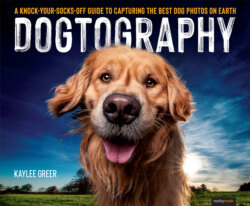Читать книгу Dogtography - Kaylee Greer - Страница 21
На сайте Литреса книга снята с продажи.
Panting
ОглавлениеAs people, we love to anthropomorphize animals. What I mean by that is that we love to assign human qualities to other, non-human creatures. If you want to do a quick exercise in the art of anthromorphization (guess how many times I had to type and re-type that to get the spelling right?) just go to your local zoo and stand in front of any enclosure of your choice. Now just sit back and wait because in mere moments you will hear lots of human-made narratives by various passersby and onlookers. Statements such as “Oh look! He loves to snuggle!”; “Oh wow, that hyena is such a nice guy!”; “He’s so happy! He loves to watch the sun set!” People assign human emotions and qualities to animals all the time. In fact, Disney’s been doing it since most of us were just tiny seeds of potential inside our parent’s loins. OK. Ew. Too far.
This is a phenomenon we are all guilty of, and especially so when it comes to the dogs in our lives. So why did this particular diatribe come in the section on panting? Easy! When we see a dog panting who may be extremely anxious or stressed out, we often associate that open mouth, tongue out sort of look with the closest human expression we can associate it with: a smile. And what does a smile equal? Happiness, of course!
“Oh look! He is so happy!”
The truth is, panting can be a sign of extreme stress and anxiety in dogs. In brachycephalic dogs, it can be a sign that they’re struggling to breathe. Sometimes, I can pinpoint the very moment I need to stop a shoot before the point of the dog’s over-exhaustion by the level of panting alone. It’s very easy to confuse a hot, exhausted, stressed out dog with a happy dog. This is where your keen eye for dog body language is going to come in to make your photo session go as smoothly as possible.
On another note, panting is one of those canine body language cues that can be a bit challenging to interpret. Panting doesn’t always mean that a dog is stressed out. Panting can also happen in relation to a dog’s level of exercise, or, more commonly, simply the heat of the day. On a very hot day it can be very difficult to get any photographs at all with your dog model’s mouth closed, since his open mouth is his only real facility to expel heat. Oppositely, if you are trying to go after a “happier-looking” expression for your images with a dog who is not inclined to panting, you might try to pause the shoot and play ball for five minutes or even take the dog on a short leashed run to get him panting just slightly. That pant action creates an open mouth that can help boost the happiness factor to the overall feel of your image. Of course always do this responsibly and make sure you know when panting turns negative.
1.7
FIGURE 1.7 Besse Mae’s exaggerated pant, super curly tongue, and wide-open whale eye suggest that she’s gone from having a good time to having a way-over-the-top, totally overwhelming time. The excitement, crazy camera gear, and warm summer afternoon temperature all combined to create a challenging atmosphere for one sweet little dog to handle. If you can train yourself to notice the difference between a happy pant and one that moves into a place of anxiety, you’ll be a step ahead of the game at managing the energy for best results at your photo shoots. Seconds after I shot this image of Besse, we took a big break and enjoyed some cool water in the shade.
